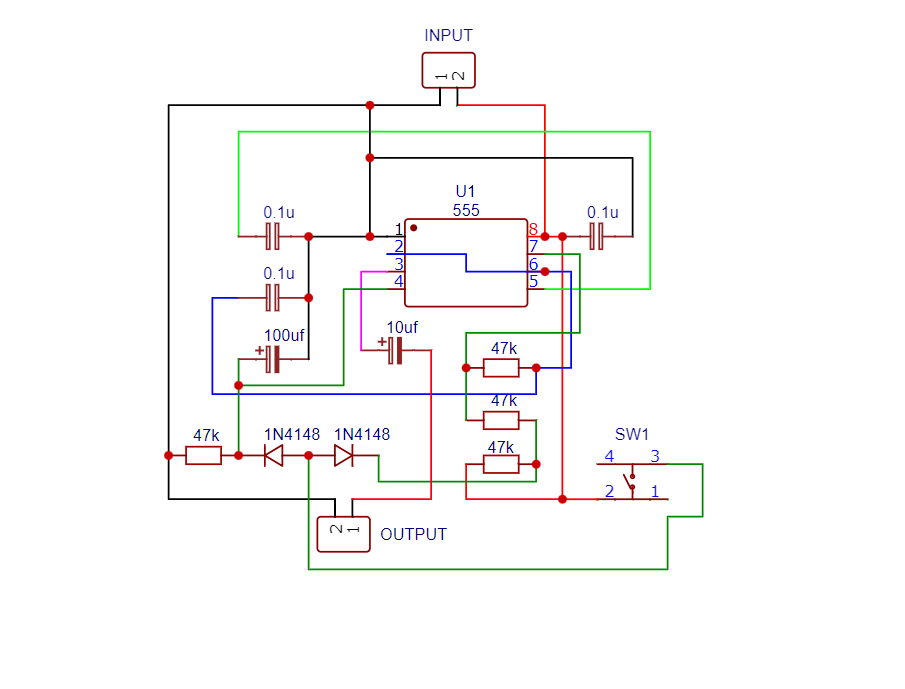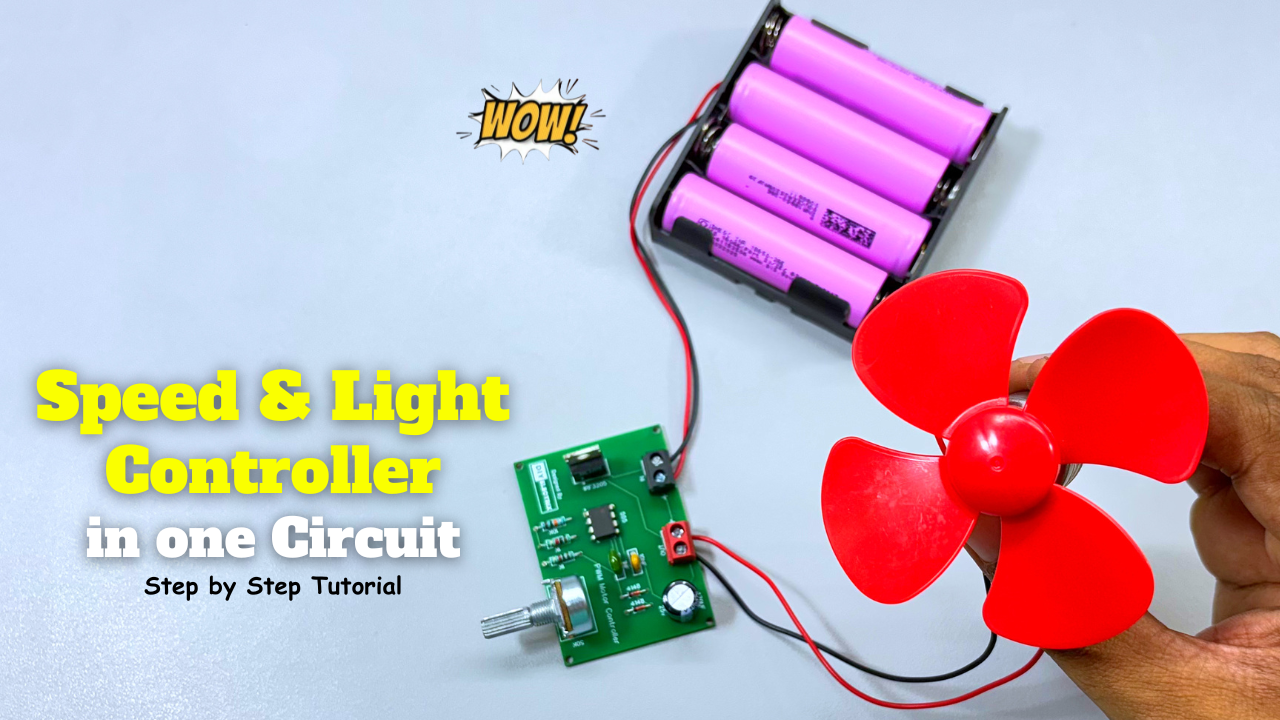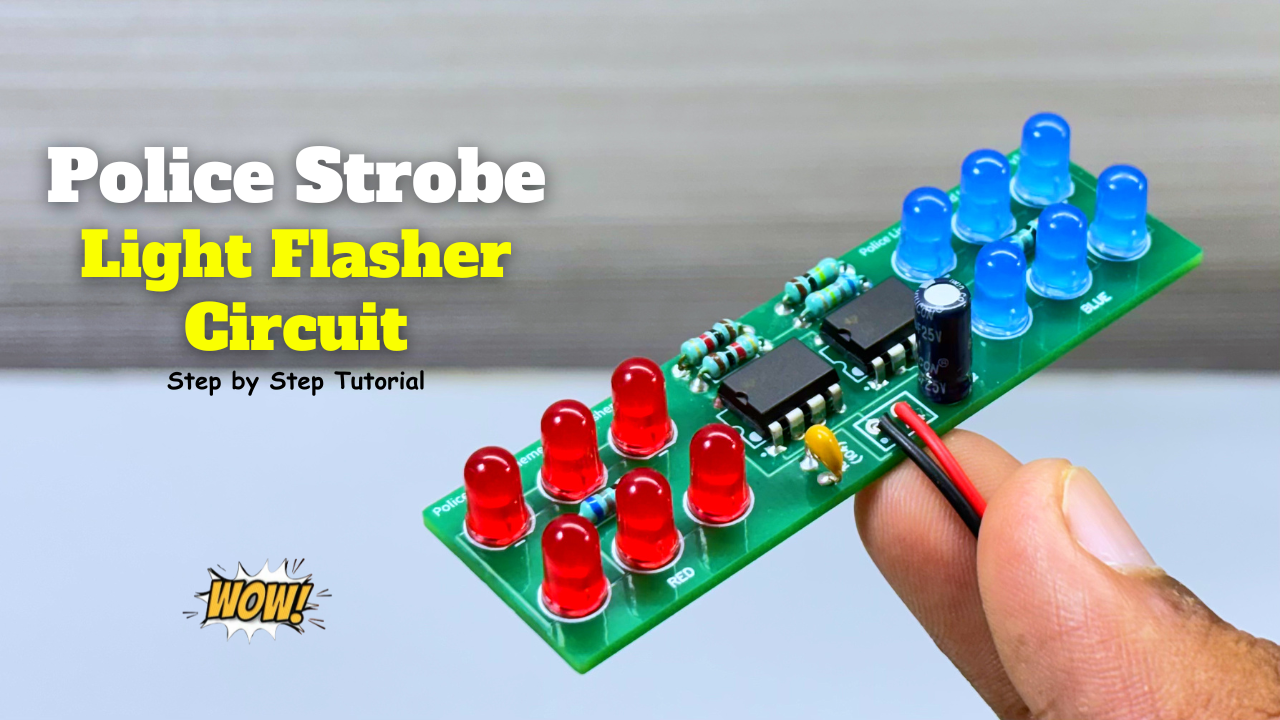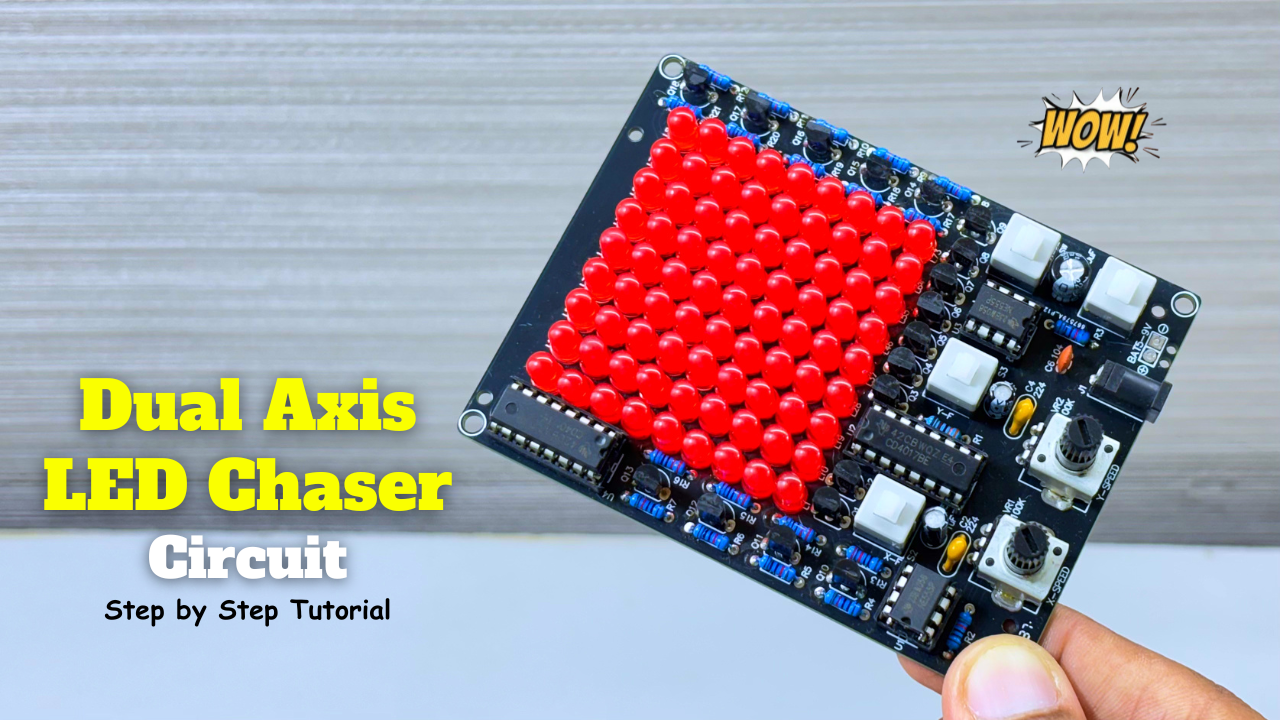Building a simple doorbell circuit using the 555 timer IC is a fun and educational project. It’s a great way to learn about timing circuits, frequency generation, and basic amplification using transistors. Whether you’re making a classic mechanical sound or integrating more modern enhancements, this project is a great starting point for those interested in the world of electronics.
With just a few components, you can design a custom doorbell that fits your needs—simple, effective, and highly customizable!
The 555 timer can be used to generate a sound at a specific frequency, which is what we want for our doorbell. When the button is pressed, the timer will be activated, and the sound will be produced through the speaker.
Components Required:
To build a simple doorbell circuit Board, you’ll need the following components:
- 555 Timer IC
- Resistors 47k ohm
- Capacitor 103, 10uf, 100uf
- Push Button
- Speaker
- Power Supply (Battery or DC adapter)
- Diode (4148)
- Connector
Doorbell Circuit Diagram:

Special Thanks to Our Sponser – JLCPCB:
No project is complete without the right tool and materials. That’s why our sponser JLCPCB stepped into provide essential material for the project. JLCPCB is a leading provider of high quality printed circuit board and PCB assembling services.
Simply head over to JLCPCB, Upload your gerber file, select specification and just place your order.
48-Hour Turnaround for 6 Layer PCBs!

$0 for 2u” ENIG. Free Via-in-Pad. High Precision. Sign Up to Get $80 New User Coupons.

How To Order PCB
555 Timer IC
The 555 timer IC is a legendary integrated circuit that has been a cornerstone of electronics projects for decades. Introduced in 1972 by Signetics, this versatile chip has become a staple in the world of electronics, renowned for its simplicity, reliability, and flexibility. The 555 timer IC is a monolithic timing circuit that can be used in a wide range of applications, including oscillators, timers, pulse generators, and alarm circuits. It consists of two main components: a voltage-controlled oscillator (VCO) and a flip-flop. The VCO generates a square wave output, while the flip-flop acts as a Schmitt trigger, providing hysteresis and ensuring clean switching.
Pinout and Configuration
The 555 timer IC has eight pins, each with a specific function:
- Pin 1: Ground
- Pin 2: Trigger input
- Pin 3: Output
- Pin 4: Reset input
- Pin 5: Control voltage input
- Pin 6: Threshold input
- Pin 7: Discharge pin
- Pin 8: Supply voltage (Vcc)
The 555 can be configured in various modes, including:
- Monostable (one-shot) mode
- Astable (free-running) mode
- Bistable (Schmitt trigger) mode
Applications and Projects
The 555 timer IC has been used in countless projects, including:
- Timer circuits (e.g., egg timers, alarm systems)
- Oscillators (e.g., audio signals, LED flashers)
- Pulse generators (e.g., infrared transmitters, ultrasonic cleaners)
- Alarm circuits (e.g., motion detectors, smoke detectors)
- LED flashers and blinkers
- Audio circuits (e.g., tone generators, sound effects)
Speakers:
Speakers are one of the most important components in modern audio technology. From listening to music and watching movies to gaming and even giving presentations, speakers help us experience sound in the most dynamic way possible. But have you ever wondered how they work or how to choose the best one for your needs? In this blog, we’ll dive into the world of speakers, exploring how they work, the different types available, and how to pick the right one for your setup.
What is a Speaker?
At its core, a speaker is an electroacoustic transducer that converts electrical signals into sound. When an audio signal (like music or a voice) is sent through the speaker, the speaker vibrates to produce sound waves that we hear with our ears. These sound waves are created by a process called vibration, which is generated through the interaction of electrical current with the components inside the speaker, such as the voice coil and diaphragm.
How Do Speakers Work?
The basic function of a speaker involves three key components:
- Magnet: The magnet creates a static magnetic field.
- Voice Coil: The voice coil is an electromagnet that is positioned within the magnetic field. It is connected to the diaphragm (the part that moves to create sound).
- Diaphragm (Cone): The diaphragm is usually made of paper, plastic, or metal and is attached to the voice coil. When the voice coil moves, it pushes and pulls the diaphragm, creating vibrations that propagate as sound waves.
When an audio signal (an alternating current) flows through the voice coil, it interacts with the magnetic field, causing the voice coil to move back and forth. This movement makes the diaphragm vibrate, producing sound. The vibrations of the diaphragm move the surrounding air particles, creating sound waves that we hear.
Types of Speakers
There are various types of speakers available, each designed to meet specific needs. Here’s a breakdown of the most common ones:
- Dynamic Speakers: The most common type of speaker found in home audio systems, headphones, and computer speakers. These use a voice coil and magnet to produce sound. They are popular for their efficiency, reliability, and affordability.
- Electrostatic Speakers: These speakers use an electrically charged diaphragm that is suspended between two stator plates. When an audio signal is applied, the diaphragm moves, creating sound. Electrostatic speakers are known for their exceptional sound quality but tend to be more expensive and less durable than dynamic speakers.
- Ribbon Speakers: Ribbon speakers use a thin, lightweight metal ribbon as the diaphragm. This design allows for incredibly fast response times and high-fidelity sound reproduction, but like electrostatic speakers, they are usually more expensive and fragile.
- Subwoofers: Subwoofers are specialized speakers designed to handle low-frequency sounds (bass). They are often larger and more powerful, typically used in home theater systems and car audio systems to enhance the bass response.
- Bookshelf Speakers: Compact speakers designed to be placed on a shelf, bookshelf, or stand. They typically offer balanced sound and are suitable for smaller spaces. They are versatile, providing a good combination of high and low frequencies.
- Floor-standing Speakers: Also known as tower speakers, these are large speakers designed to stand on the floor. They tend to offer more power and a fuller range of sound compared to bookshelf speakers. Floor-standing speakers are commonly used in high-end audio systems.
- Bluetooth Speakers: These wireless speakers use Bluetooth technology to connect to smartphones, tablets, or computers. Bluetooth speakers are popular for their portability, ease of use, and convenience.
- Computer Speakers: These are small, usually powered speakers designed for use with a computer. They come in various sizes, from basic desktop speakers to high-end studio monitors.
Speakers are essential for delivering quality sound in a wide range of audio devices, from home entertainment systems to personal gadgets. Understanding how they work, the different types available, and the key factors to consider when purchasing can help you make the right choice for your audio needs.
Whether you’re building a custom home theater, upgrading your desktop audio setup, or looking for a portable Bluetooth speaker, there’s a speaker out there to suit every requirement. Happy listening!
More Projects
-
Speed & Light Contoller in one circuit
A PWM (Pulse Width Modulation) motor controller is an electronic device that uses PWM signals to control the speed and direction of a motor. It works by varying the width …
-
Police Strobe Light Effect Circuit
A Police Strobe Light Chaser Circuit is an electronic circuit designed to mimic the flashing red and blue lights used on police vehicles. It alternately flashes groups of LEDs (commonly …
-
Dual Axis LED Chaser Circuit
Components Required: Special Thanks to Our Sponser – JLCPCB: No project is complete without the right tool and materials. That’s why our sponser JLCPCB stepped into provide essential material for …



